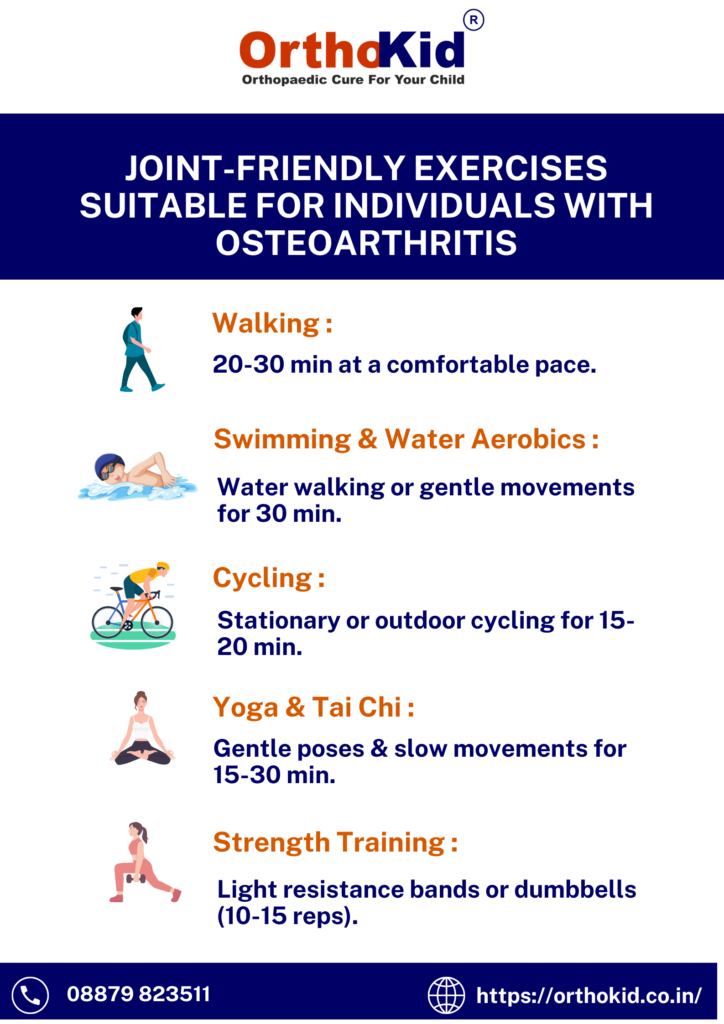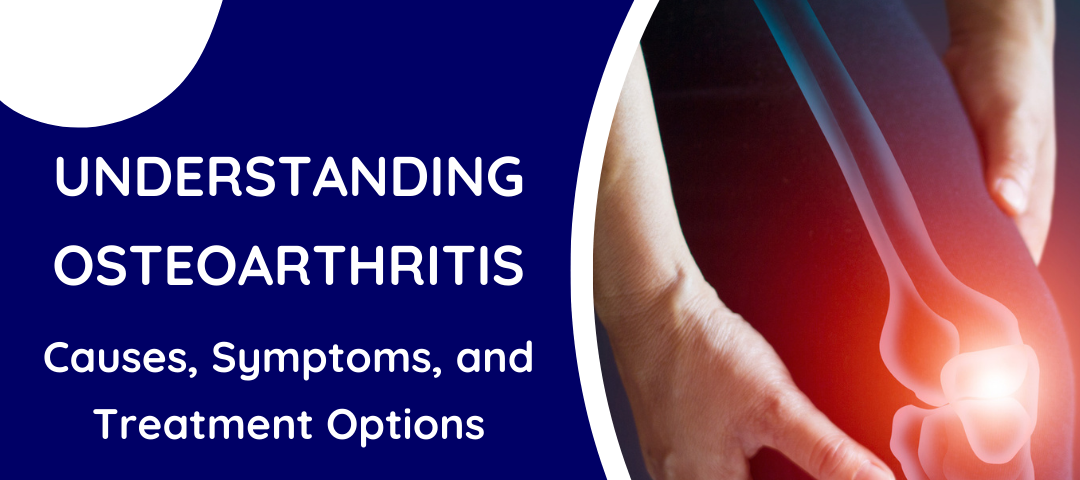Introduction
Osteoarthritis (OA) is the most prevalent form of arthritis, affecting millions globally. It occurs when the protective cartilage cushioning the ends of bones wears down over time, leading to pain, stiffness, and decreased mobility. Understanding OA’s causes, symptoms, and treatment options is crucial for effective management and improved quality of life.
Causes of Osteoarthritis
Several factors contribute to the development of OA:
- Age: The risk of OA increases with age due to the cumulative wear and tear on joints.
- Joint Injury or Overuse: Previous joint injuries or repetitive stress can damage cartilage, accelerating OA onset.
- Obesity: Excess body weight adds stress to weight-bearing joints like knees and hips, heightening OA risk.
- Genetics: A family history of OA can predispose individuals to the condition.
- Bone Deformities: Congenital joint malformations or defective cartilage can lead to OA.
Symptoms of Osteoarthritis
OA symptoms often develop gradually and may include:
- Pain: Joints may hurt during or after movement.
- Stiffness: Noticeable upon awakening or after periods of inactivity.
- Tenderness: Joints may feel tender when applying light pressure.
- Loss of Flexibility: Reduced range of motion in affected joints.
- Grating Sensation: A feeling or sound of bone rubbing on bone.
- Bone Spurs: Extra bits of bone that may form around affected joints.
Treatment Options
While OA is a chronic condition with no cure, various treatments can alleviate symptoms and improve joint function:
- Lifestyle Modifications:
- Exercise: Engaging in low-impact activities like swimming or walking strengthens muscles around joints, enhancing stability.
- Weight Management: Maintaining a healthy weight reduces stress on joints.
- Assistive Devices: Using canes or shoe inserts can relieve joint pressure.
- Medications:
- Pain Relievers: Over-the-counter options like acetaminophen can reduce pain.
- Nonsteroidal Anti-Inflammatory Drugs (NSAIDs): Medications such as ibuprofen alleviate pain and inflammation.
- Corticosteroid Injections: Injected directly into the joint to reduce inflammation.
- Physical and Occupational Therapy:
- Physical Therapy: Tailored exercises improve flexibility and strengthen muscles around affected joints.
- Occupational Therapy: Teaches ways to perform daily tasks without adding stress to joints.
- Surgical Options:
- Joint Repair: Smoothing or realigning joint surfaces to reduce pain.
- Joint Replacement: Replacing damaged joints with artificial ones, commonly performed on hips and knees.
Preventive Measures
To reduce the risk of developing OA:
- Stay Active: Regular exercise maintains joint flexibility.
- Protect Joints: Use proper techniques during activities to avoid injury.
- Maintain a Healthy Weight: Reduces stress on weight-bearing joints.

Conclusion
Osteoarthritis can significantly impact daily life, but with appropriate management strategies, individuals can lead active and fulfilling lives. If you experience joint pain or stiffness, consult with an orthopedic specialist to explore personalized treatment options.




